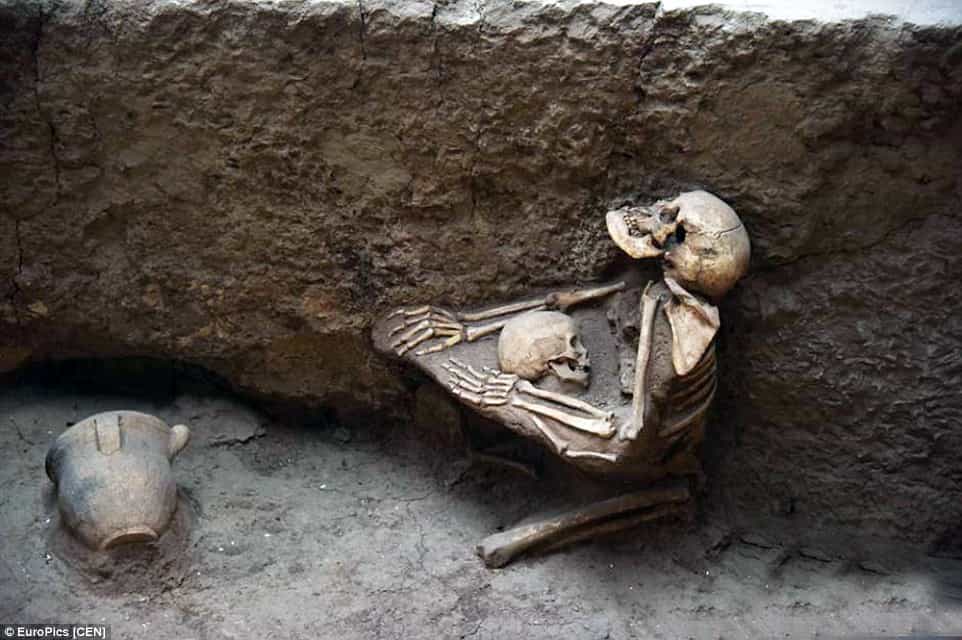The loving embrace of a mother and her child lasts for 4,000 years, Chinese archaeologists reported after finding their interlocked skeletons. The mother was trying to shield her child from a massive earthquake that struck China in 2000 BC and triggered massive floods; the event is sometimes referred to as ‘China’s Pompeii’. The site is riddled with tragic scenes.

Lajia Ruins Museum, located in northwest China’s Qinghai province, is a 4000-year-old earthquake relic, with very well-preserved artifacts and skeletons. The entire disaster scene is so shocking it has been likened to the Pompeii tragedy. Pompeii was a Roman city wiped off the face of the Earth after a volcanic eruption and buried under ash and pumice.
Archaeologically, the entire site is stunning: it paints an incredibly well-preserved picture of an important ancient event. It is also very important because it holds early clues to an early Bronze Age civilization that lived in the upper Yellow River region and of which we know very little about. But from a human point of view, it’s just heartbreaking.
These people had a rough fate, a disaster killed them they could do nothing to protect themselves; they couldn’t even protect their children, try as they might. It’s a testimony to nature’s strength, and how weak we sometimes are against it.
I hope they don’t separate the two skeletons. I’m not sure why – it’s not for a religious reason – but separating the two seems wrong.






